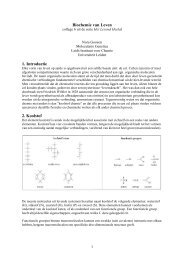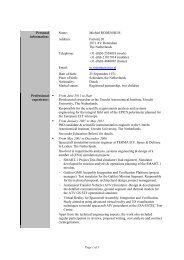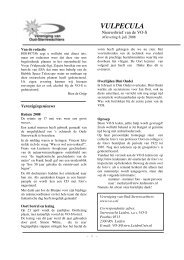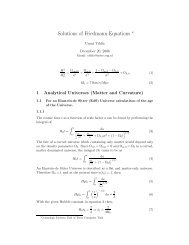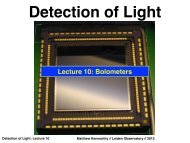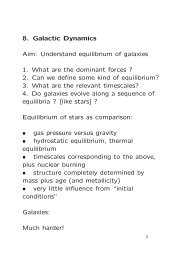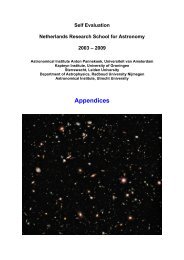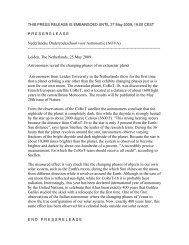4. Structure of Dark Matter halos Obviously, we cannot observe the ...
4. Structure of Dark Matter halos Obviously, we cannot observe the ...
4. Structure of Dark Matter halos Obviously, we cannot observe the ...
You also want an ePaper? Increase the reach of your titles
YUMPU automatically turns print PDFs into web optimized ePapers that Google loves.
6-4-10see http://www.strw.leidenuniv.nl/˜ franx/college/galaxies10 10-c04-15<br />
In our own Milky Way, <strong>the</strong> number <strong>of</strong> satellites appears<br />
much smaller than predicted by <strong>the</strong> models:<br />
The solution for this problem is not clear. Are <strong>we</strong> missing<br />
a lot <strong>of</strong> satellites ? Or do <strong>we</strong> underestimate <strong>the</strong>ir<br />
mass ? Or is <strong>the</strong> dark matter model wrong ?<br />
Problem sets<br />
1) Derive <strong>the</strong> enclosed mass M(< r) for <strong>the</strong> NFW<br />
pr<strong>of</strong>ile ρ(r) = ρs/[(r/rs)(1 + r/r2) 2 ]. Use r/(1 + r) 2<br />
= 1/(r + 1) − 1/(1 + r) 2<br />
2) Derive <strong>the</strong> circular velocity as a function <strong>of</strong> radius<br />
6-4-10see http://www.strw.leidenuniv.nl/˜ franx/college/galaxies10 10-c04-16<br />
for <strong>the</strong> NFW pr<strong>of</strong>ile<br />
3) Approximate <strong>the</strong> rotation curve <strong>of</strong> UGC 4325 by a<br />
straight line, through (0 arcsec, 0 km/s) and (60 arcsec,<br />
110 km/s). What is <strong>the</strong> best fitting NFW model ?<br />
This would be <strong>the</strong> model for which<br />
χ 2 = � (Vobs − Vmodel) 2 dr is minimized.<br />
What is <strong>the</strong> average rms residual ? [(Vobs − Vmodel)] ?<br />
4) We can see from <strong>the</strong> figure from Springel et al. that<br />
about 30-40 % <strong>of</strong> <strong>the</strong> mass <strong>of</strong> a halo is in sub<strong>halos</strong>.<br />
This appears quite different from <strong>the</strong> situation in clusters,<br />
where <strong>the</strong> light is dominated by <strong>the</strong> ensemble <strong>of</strong><br />
regular cluster galaxies, and NOT by <strong>the</strong> brightest cluster<br />
galaxy. Can you think <strong>of</strong> an explanation ?



